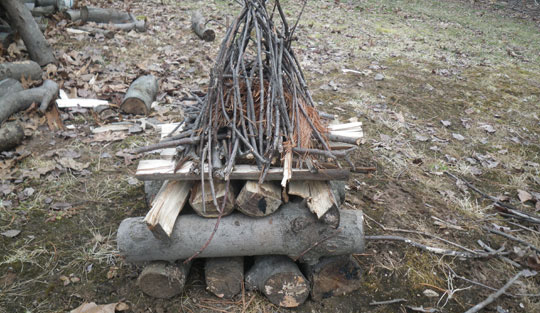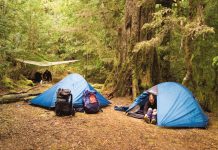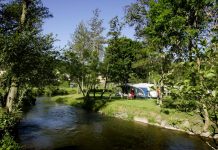Waking up in the middle of a cold night to lit up the camp fire is a “little†unpleasant. Way too many times the fire is hard to lit and your hands are easy to freeze. All campers are familiar with this story and wish they had an Irish leprechaun to do it for them. With a smart trick you can have a good night sleep in the warm tent and make a self-feeding fire.

Upside Down the Physics
Regular camp fires are hard to prepare and quick to burn out, as they “eat†all the logs, no matter how big they are. But if you paid some attention to physics classes you surely know that every fire burns down, so it can be prepared to last longer. For example, in case of a candle the more wax there is, the longer lasts the flame. In translation, if the logs are bigger towards the bottom layer of the fire, the fire will last longer.
How it Works
A regular fire is made out of a pile of wood sticks. As they burn, they became charcoal, which eventually cool down. But if the fire is made out of multiple layers of wood, bigger in depth, charcoals made by the upper layer will gradually warm up and turn to charcoal all the lower layers.
Starting from this, here is how to build an upside down self-feeding camp-fire.
The Wood Pile
Gather big logs of dried wood for the bottom layer. Depending on how much do you want the fire to burn, decide on their size, but keep proportions. Place the larger pieces in a row leaving no space between them. Add more layers and place them in similar way. Don’t stack them up, as you would normally do, but place them in row, just like you did with the first ones.
To ensure better grip between the layers, place each layer perpendicular on the previous. In other words, if the first row has a North-South alignment, the second should have a West-East alignment.
Wood Size
As you pile up the layers, decrease the size of logs. Place tinder or any other material with similar burning qualities, like dry pine needles on top of the log layers. Around it build a hut-like feature (also called tee-pee) and light it up. Tend for your fire, make sure it has enough air and that the hut is completely lit. After a few caring minutes, you can relax because you’ve managed to make a night-lasting fire.









